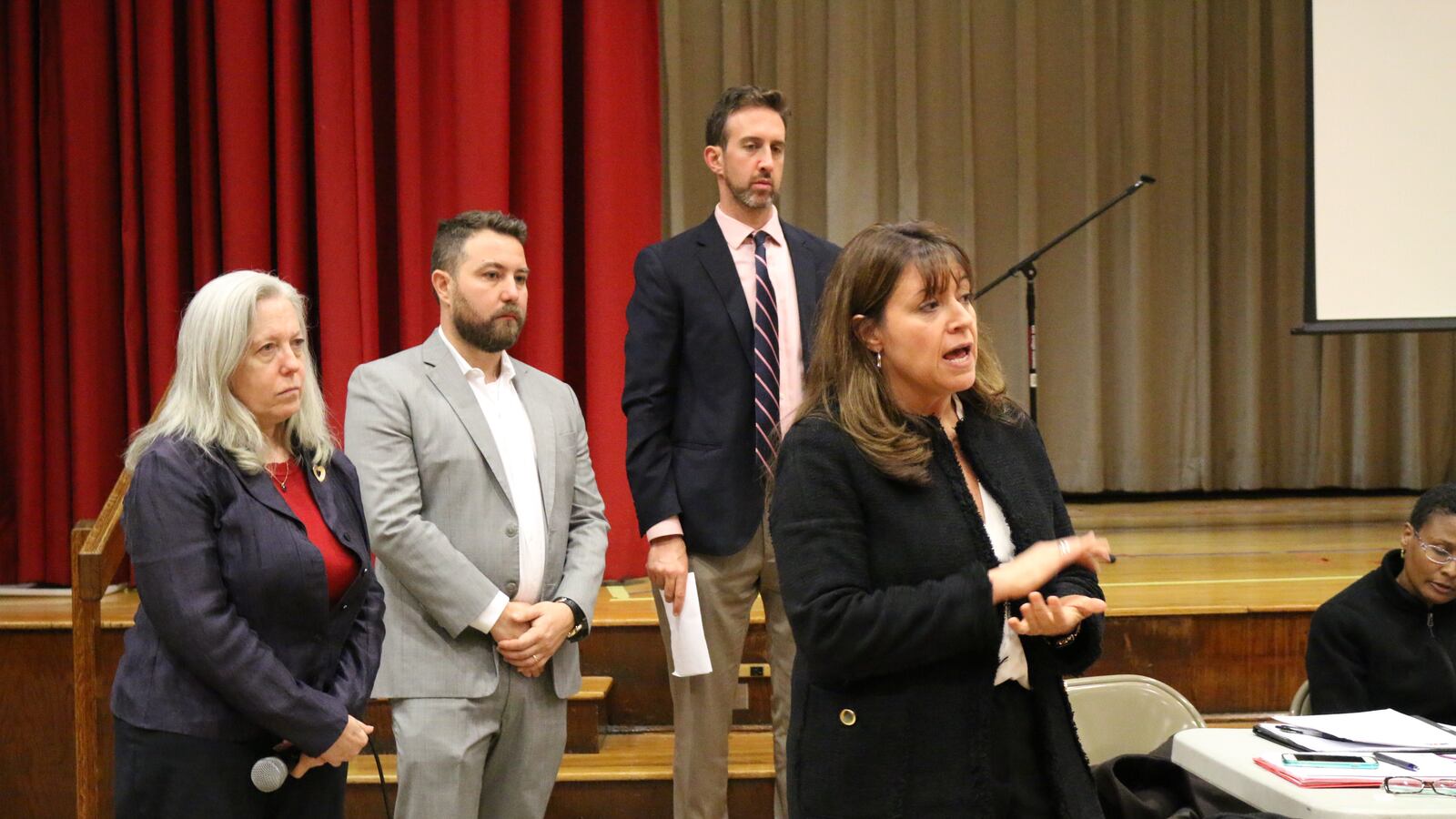A viral video and a late-night tweet by New York City’s new schools chancellor may have left you trying to catch up with the debate about a proposal to integrate Upper West Side middle schools.
Here’s a primer to the controversy that suddenly has everyone talking about state tests, middle school admissions, and privilege:
What was that meeting in the video about?
- There’s a plan on the table to offer a share of seats at 16 middle schools to students who have low scores on statewide math and English exams. Those 16 schools are in District 3, which includes the Upper West Side and part of Harlem.
- The expectation there now is that high test scores — achieved most often by the district’s middle-class students — should guarantee families their top choice of middle schools.
- The plan’s specifics are still a work in progress. But as the proposal stands now, 10 percent of admissions offers would go to students scoring at the lowest level (level 1), and another 15 percent would go to students scoring just below the proficiency bar (level 2).
- Those admissions rules would increase the proportion of low-scoring students at some highly sought-after schools, according to a city analysis, but have little impact at others.
Whose plan is it? Who supports it?
- Officials in District 3 — namely, District 3 Superintendent Ilene Altschul. This is not a citywide plan, and it’s not a proposal put forth by the mayor’s office.
- While the video showed parents speaking vehemently against the proposal, many on the district’s elected parent council are on board. The council plays only an advisory role in setting these kinds of admissions rules, though.
- Many middle school principals in the district are also speaking out in favor of the proposal and say they could handle having students with a wider range of academic abilities than they serve now.
- While research suggests that academic integration generally benefits all students, some research shows that when the gulf among students is too wide, neither high- nor lower-performing students are better off.
Why is this getting so much attention?
- New York City’s schools are deeply segregated by race and class, and conversation about whether and how to change that has picked up recently. Among the latest developments: advocates have focused on segregation at the city’s specialized high schools, where black and Hispanic students accounted for just 10.4 percent of offers.
- Unlike some parts of the city, the area that makes up District 3 is pretty diverse — yet schools are starkly divided: While less than 10 percent of the students at some middle schools come from low-income families, nearly 100 percent do at others.
- The controversy gets at unspoken and often unexamined rules about who gets what privileges in New York City — in this case, who gains entry into desirable middle schools. Parents have expected that their children would receive spots there if they do well on tests, and this proposal challenges that notion.
- The video shows in stark terms what some see as the unlevel playing field that underlies the current system. An angry mom insists that telling children that they didn’t get to attend a great middle after “you worked your butt off” will drive home the message that “life sucks.” But Henry Zymeck, the principal of The Computer School, noted that some parents spent $5,000 in tutoring on state exams — an expense that is out of reach for most parents.
- Now Chancellor Richard Carranza has weighed in. He said he’s still looking into the details of the proposal, but called it “well thought-out” and “very moderate, quite frankly.”
Is this related to the last big public fight about integration on the Upper West Side?
- You might be thinking about this case, where the education department proposed new attendance zone lines for elementary schools that would send some students headed for high-performing P.S. 199 instead to P.S. 191, which has had much lower test scores and far more students who are poor and of color.
- While it is the same neighborhood and the cases brought similar tensions to the fore, they aren’t directly related.
- One of the goals of that plan was to diversify schools, but officials were also trying to alleviate overcrowding. Here’s a look back at where things stand with those schools today.
- But yes, many of the same parents are involved. The meeting in the video was even at one of the two elementary schools in question, P.S. 199 — the more affluent and outspoken of the two schools in the 2015 fight.
- Altschul, the district superintendent, also proposed an integration plan two years ago that would have affected district middle schools. That plan would have required schools to set aside 30 percent of seats for students from low-income families, but it died after she did not win over principals.
What happens next?
- The leaders on the Community Education Council and the district superintendent have taken the proposal on the road to get feedback from parents in the district. The next CEC meeting is scheduled for 6:30 p.m. on May 16 at P.S. 242. A special meeting that will focus on the admissions proposal will take place at 6:30 p.m. on May 22 at P.S. 163.
- It’s possible for the plan to get tweaked, based on the feedback received.
- Altschul would then formally propose the changes to the education department for approval. The parent education council wouldn’t have a formal role in approving the plan. The goal is for changes to go into effect in the 2019-20 school year.

